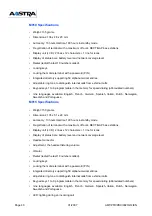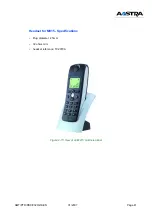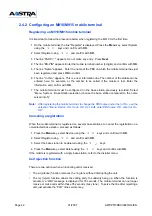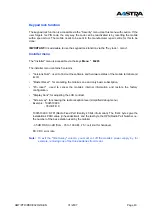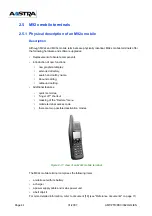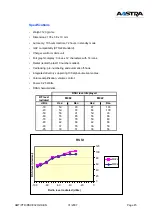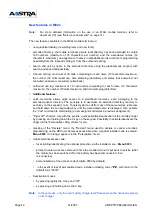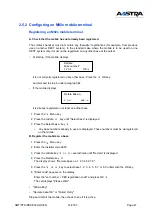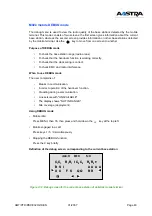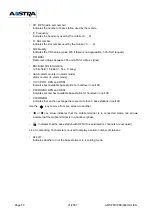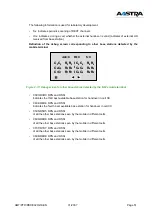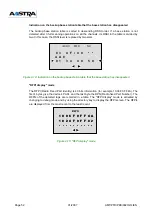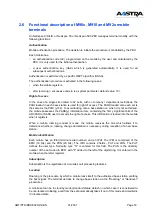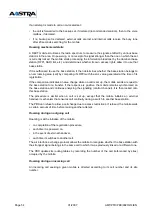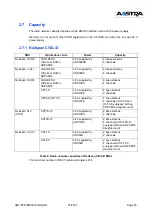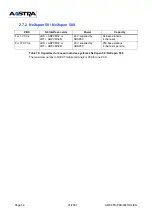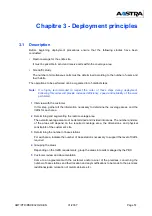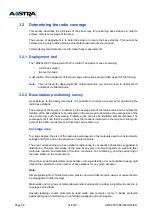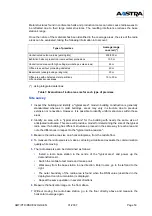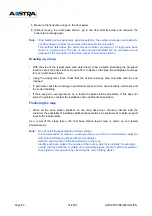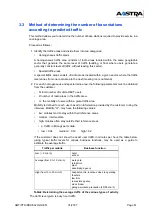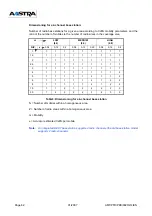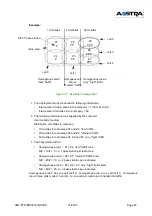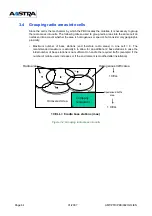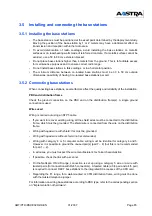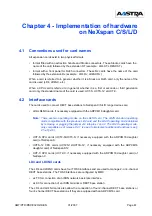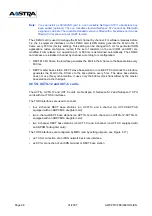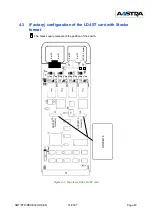
Page 54
01/2007
AMT/PTD/PBX/0020/2/4/EN
If an attempt is made to call a non-located set:
•
the call is forwarded to the backup set, if declared (recommended solution), then to the voice
mailbox, if declared.
•
If no backup set is declared, external calls are lost and internal calls receive the busy tone
after 20 seconds searching for the mobile.
Roaming mechanism details
A DECT mobile scrutinizes the radio spectrum to measure the signals emitted by various base
stations in the area. On power up, or on receipt of a signal stronger than the one on which the set
is currently locked, the mobile starts processing the information broadcast by the dominant base
station (RFPI, SARI list, etc.) and determines whether its own access rights allow it to use that
base station.
If it is authorised to use the base station, it then determines whether the base station belongs to
a new roaming area (cell) by comparing it’s RFPI with the LAL value generated at the time of its
registration.
If the comparison indicates an area change while no call is set up, the mobile sends a request to
the base station for a transfer. If the response is positive, the mobile remains synchronized on
the base station and continues analysing the signalling (control channel). It is then locked onto
this base station.
The procedure is similar when a call is set up, except that the mobile initiates an external
handover mechanism that ensures call continuity during a switch to another base station.
The PBX can refuse to allow a cell change due to access restrictions. If refused, the mobile waits
a certain amount of time before making another attempt.
Roaming during an outgoing call
Roaming is at the initiative of the mobile:
•
on completion of the registration procedure,
•
each time it is powered on,
•
in the event of external handover,
•
each time it switches to another cell.
The air interface exchange protocol allows the mobile to recognize whether the base station with
the strongest signal belongs to the same cell to which it was previously linked or a different one.
The PBX updates its routing tables by recording the number of the cell (referenced by sites)
occupied by the mobile.
Roaming during an incoming call
An incoming call seeking a given mobile is directed according to its cell number and its site
number.
Summary of Contents for NeXspan C
Page 2: ...Page 2 01 2007 AMT PTD PBX 0020 2 4 EN...
Page 20: ...Page 20 01 2007 AMT PTD PBX 0020 2 4 EN...
Page 66: ...Page 66 01 2007 AMT PTD PBX 0020 2 4 EN...
Page 70: ...Page 70 01 2007 AMT PTD PBX 0020 2 4 EN Figure 4 2 Bottom view of the LD4 ST card...
Page 134: ...Page 134 01 2007 AMT PTD PBX 0020 2 4 EN...

